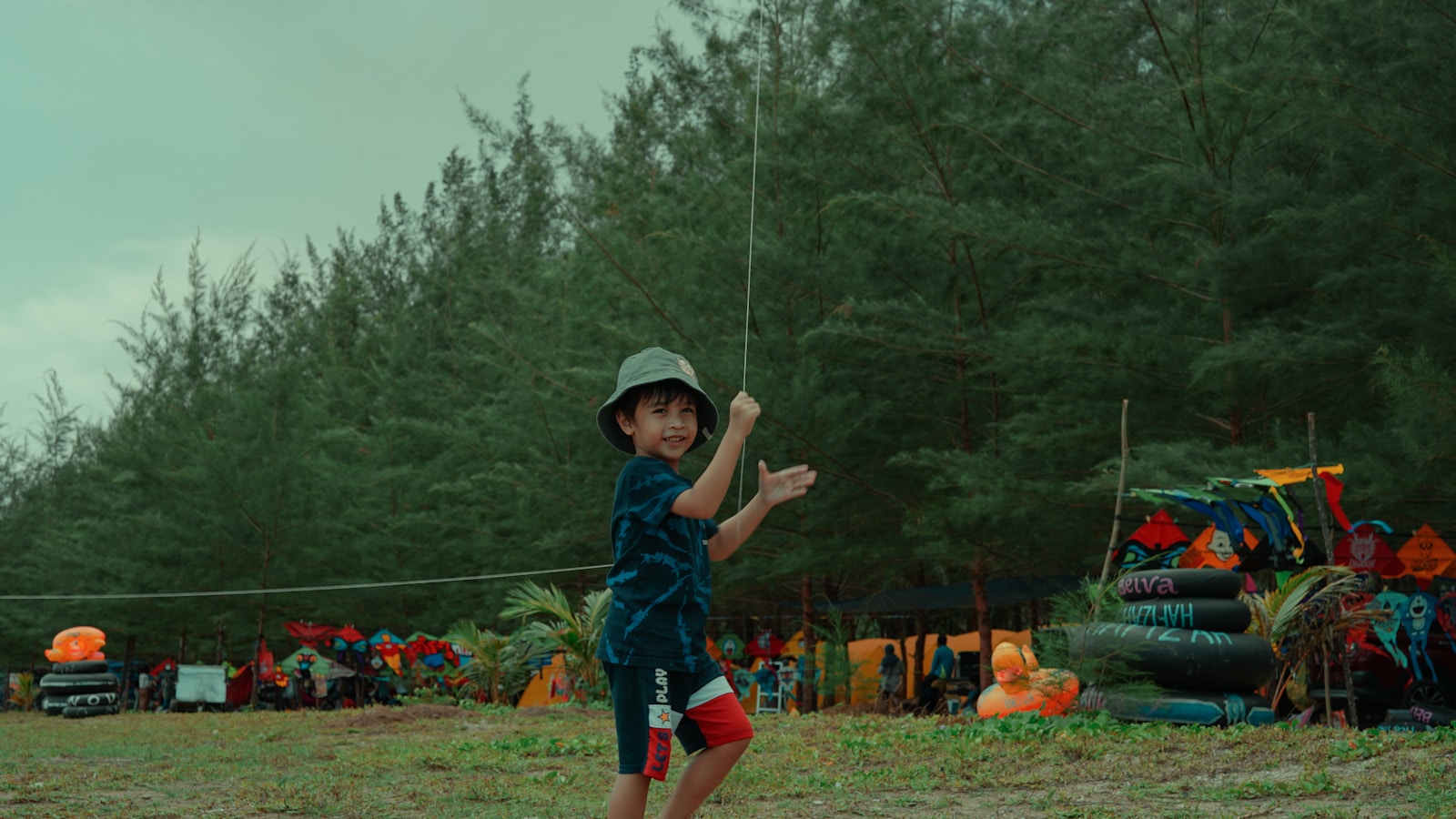Outdoor play provides essential developmental benefits that indoor activities cannot replicate, supporting physical health, cognitive development, and emotional well-being through natural environments and unstructured exploration.
Research from the University of Illinois shows that children with regular outdoor play demonstrate 20% better attention spans, 25% improved creativity scores, and significantly lower rates of anxiety and depression compared to children with primarily indoor lifestyles.
1. Physical Development and Motor Skill Enhancement
1.1 Gross Motor Skills and Coordination
Outdoor environments provide varied terrain, obstacles, and challenges that develop balance, coordination, and large muscle strength through natural movement patterns impossible to replicate indoors. Climbing, running, and jumping in natural settings build comprehensive physical competence.
1.2 Fine Motor Skills Through Natural Materials
Handling natural objects like sticks, stones, leaves, and sand develops fine motor skills and hand-eye coordination while providing sensory experiences that support neural development and dexterity improvement.
1.3 Spatial Awareness and Body Confidence
Navigating outdoor spaces develops spatial awareness, depth perception, and body confidence through three-dimensional movement and environmental interaction that builds physical self-assurance and safety awareness.
1.4 Strength and Endurance Building
Outdoor play naturally builds cardiovascular fitness, muscle strength, and endurance through sustained physical activity that feels like play rather than exercise, establishing lifelong fitness foundations and healthy activity patterns.
2. Cognitive Development and Learning Enhancement
2.1 Executive Function and Attention Improvement
Natural environments restore attention capacity and improve executive function through what researchers call “Attention Restoration Theory”—natural settings provide mental rest that improves focus and self-regulation abilities.
2.2 Creativity and Imaginative Play Stimulation
Unstructured outdoor environments stimulate creativity and imagination through open-ended materials and spaces that can become anything in children’s minds, fostering innovative thinking and problem-solving abilities.
2.3 Scientific Thinking and Natural Curiosity
Outdoor exploration encourages scientific thinking through observation, hypothesis testing, and discovery learning about natural phenomena, weather, plants, animals, and physical properties of materials.
2.4 Risk Assessment and Decision-Making Skills
Outdoor play provides appropriate risk-taking opportunities that teach children to assess situations, make decisions, and learn from consequences in relatively safe environments that build judgment and confidence.
3. Social Skills and Emotional Development
3.1 Cooperation and Leadership in Free Play
Unstructured outdoor play requires negotiation, cooperation, and leadership as children organize games, resolve conflicts, and work together without adult direction, building essential social competence.
3.2 Emotional Regulation and Stress Reduction
Natural environments provide calming effects that reduce cortisol levels and support emotional regulation, while physical activity releases endorphins that improve mood and reduce anxiety and behavioral problems.
3.3 Independence and Self-Confidence Building
Outdoor exploration builds independence and self-confidence as children navigate challenges, solve problems, and achieve goals without constant adult supervision or intervention, developing autonomy and resilience.
3.4 Empathy and Environmental Stewardship
Regular nature interaction develops empathy for living things and environmental stewardship values through direct experience with plants, animals, and natural systems that foster care and responsibility.
4. Sensory Integration and Neural Development
4.1 Multi-Sensory Experience and Brain Integration
Outdoor environments provide rich multi-sensory experiences—varied textures, sounds, smells, temperatures—that support sensory integration and comprehensive brain development through complex environmental stimulation.
4.2 Vestibular System Development and Balance
Activities like swinging, spinning, rolling, and climbing develop the vestibular system essential for balance, coordination, and spatial orientation that supports academic learning and physical competence.
4.3 Proprioceptive Awareness and Body Knowledge
Outdoor play develops proprioceptive awareness—knowledge of body position and movement—through varied physical challenges that improve coordination, balance, and physical self-awareness essential for safety and confidence.
4.4 Visual Development and Depth Perception
Natural environments provide varied visual experiences, distances, and lighting that support healthy visual development and depth perception better than primarily indoor, close-focus visual environments.
5. Mental Health and Psychological Well-Being
5.1 Stress Reduction and Cortisol Regulation
Natural environments reduce stress hormones and promote relaxation responses that improve mental health, reduce anxiety, and support healthy emotional development through biophilic connections.
5.2 Attention Disorders and Hyperactivity Management
Outdoor play significantly improves symptoms of ADHD and attention difficulties through natural environments that provide mental restoration and appropriate outlets for physical energy and movement needs.
5.3 Depression Prevention and Mood Enhancement
Regular outdoor activity prevents depression and improves mood through natural light exposure, physical activity, and connection with nature that supports healthy brain chemistry and emotional regulation.
5.4 Self-Esteem and Competence Building
Outdoor challenges and achievements build self-esteem through mastery experiences that children choose and accomplish independently, creating confidence and positive self-concept development.
6. Modern Challenges and Outdoor Play Barriers
6.1 Screen Time Competition and Digital Preferences
Address competition from digital entertainment through making outdoor time appealing, social, and engaging while managing screen time to preserve interest in natural environments and physical play.
6.2 Safety Concerns and Risk Aversion
Balance legitimate safety concerns with appropriate risk-taking opportunities, understanding that some risk is essential for development while ensuring reasonable safety precautions and supervision.
6.3 Structured Activity Dominance and Over-Scheduling
Protect unstructured outdoor play time from over-scheduling and excessive organized activities that may prevent the free exploration and creativity that natural environments uniquely provide.
6.4 Urban Environment Limitations and Access Issues
Find creative solutions for urban outdoor play through parks, playgrounds, rooftops, balconies, or family outings that provide nature access even in city environments with limited natural spaces.
7. Practical Implementation and Family Integration
7.1 Daily Outdoor Time and Routine Integration
Establish daily outdoor time as non-negotiable family routine, understanding that even short periods provide benefits while longer sessions support more comprehensive development and exploration.
7.2 Weather Adaptation and Year-Round Play
Adapt outdoor play to all weather conditions through appropriate clothing and weather-suitable activities, teaching children that outdoor play is possible and enjoyable in various weather situations.
7.3 Family Outdoor Activities and Modeling
Participate in outdoor activities as a family, modeling appreciation for nature and physical activity while creating shared experiences and demonstrating that outdoor time is valuable and enjoyable.
7.4 Community Resources and Natural Space Utilization
Utilize community resources like parks, trails, beaches, forests, or playgrounds while exploring local natural areas that provide outdoor play opportunities and environmental education experiences.
Conclusion
Outdoor play provides irreplaceable developmental benefits for physical health, cognitive growth, emotional well-being, and social skills that indoor activities cannot duplicate.
Prioritize daily outdoor time and natural environment exposure while overcoming modern barriers through creative solutions and family commitment. Children’s healthy development depends on regular connection with natural environments that support comprehensive growth across all developmental domains.












